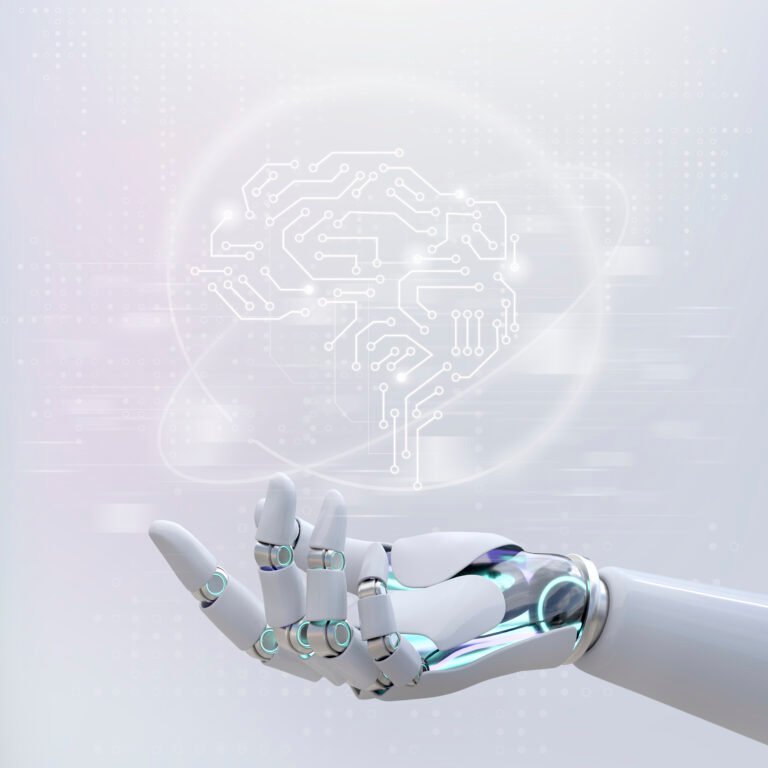The Future of Search and AI: A New Era of Interaction, Creation, and Opportunity
The Verge Podcast with Google CEO Sundar Pichai | July 21, 2025
Technology is undergoing another seismic shift—and at the center of it all is artificial intelligence. Sundar Pichai, CEO of Alphabet and Google, recently joined Decoder for a wide-ranging conversation that shed light on the evolving landscape of AI, intelligent agents, and the future of search. His insights paint a future where AI doesn’t just power tools—it transforms the way we create, interact, and navigate the digital world.

The Next Platform Shift Is Here
For decades, we’ve been living through cycles of technological evolution. From desktop computing to mobile devices, from the static web to interactive apps—each shift unlocked new user experiences and business models. Today, we stand at the dawn of a new shift: AI as a foundational platform.
Unlike previous shifts, which involved new hardware or faster processors, this transition is driven by a platform that learns, improves, and adapts over time.
“AI is going to be bigger than the internet.” – Sundar Pichai
This isn’t hyperbole. Pichai emphasizes that AI has the potential to transform every layer of the technology stack, from the backend infrastructure to the user interface. What’s remarkable about this moment is not just the tools we are building—but the new types of interactions and products these tools enable.
Important Takeaway: AI is no longer just a technology feature—it’s the foundation for a new kind of computing.
Practical Tip: Start learning about AI’s capabilities, even if you’re not technical. Platforms like Gemini, ChatGPT, and Replit offer low-barrier ways to experiment.
Real-Life Example: Just as the shift to mobile brought us Uber, DoorDash, and Instagram, AI will bring new apps we haven’t imagined yet—like personal agents that plan vacations, write legal contracts, or even create video content on your behalf.
From Research to Reality: AI in Action
One of Google’s themes this year is “research becomes reality”, and for good reason. AI research that once lived in white papers and labs is now showing up in everyday products.
For instance, VO3, a powerful generative model, can now create realistic videos from prompts. Tools like NotebookLM help users generate research summaries from thousands of documents. And with Flow, Google is enabling even casual users to build AI applications—what Pichai calls the “wipe coding” revolution.
We’re entering a world where everyone becomes a creator, not just software engineers.
Important Takeaway: The barrier to entry for app creation is falling fast. AI is democratizing innovation.
Practical Tip: Explore no-code AI platforms like Flow, Glide, and Bubble. They now integrate with LLMs, letting non-developers automate tasks and build tools.
Real-Life Example: A solopreneur running a home bakery uses Gemini and Flow to build a custom order tracker, automate social media captions, and even translate customer feedback—all without writing a line of code.
Evolution of AI Platform Shifts
Phase | Technology Focus | Key User Impact | Example Tools/Products |
Phase 1 | Model and Transformer Dev | Core AI capabilities like LLMs emerge | GPT, BERT, Gemini 1.0 |
Phase 2 (Now) | Productization | AI becomes embedded in real-world apps | Gemini AI, NotebookLM, VO3 |
Phase 3 (Next) | Robotics and Physical AI | Real-world AI agents interact in physical space | Waymo, General-Purpose Robots |
Agents: The Next Evolution in User Experience
Imagine an AI assistant that doesn’t just answer questions—but books your doctor’s appointment, reschedules a missed flight, negotiates a refund, or manages your calendar. These are not science fiction scenarios. AI agents are already here—and they are evolving rapidly.
These agents operate across apps and services, carrying out tasks without constant user intervention. Think of them as smart middlemen who understand your intent, gather data, and act accordingly.
“Think of agents as a new powerful format… removing friction and improving the user experience.”
Important Takeaway: AI agents will replace many of today’s manual workflows—especially in productivity, shopping, and research.
Practical Tip: Start automating small workflows using tools like Zapier with AI, or explore Gemini for Workspace, which integrates with Gmail, Calendar, and Docs.
Real-Life Example: A freelance writer uses an AI agent to handle article research, summarize source material, draft an outline, and even generate a content calendar.
Search Is Transforming—But It’s Not Dying
Many fear that AI Overviews and answer-driven experiences will kill traditional web search, but the opposite may be true. Pichai says that Google is seeing an increase in overall queries, particularly more complex, multi-step ones that require deeper understanding.
AI Overviews offer contextual, structured responses, sometimes acting as interactive mini-apps that allow users to explore different angles of a topic. But Pichai assures that these experiences still link to the web—and often drive higher-quality traffic.
“We’re committed to sending traffic to the web… The breadth of the web is still valuable.”
Important Takeaway: Search isn’t disappearing—it’s becoming more interactive and intelligent.
Practical Tip: If you run a website or blog, focus on creating rich, structured content and using schema markup to be eligible for AI-powered search displays.
Real-Life Example: A health blogger updates their posts with FAQ sections, charts, and video summaries. These get picked up by Gemini AI and shown in overview results, increasing traffic and session duration.
How AI Agents & Search Impact Different Layers of The Content Ecosystem
AI Models | Generate, summarize, and assist users with content
|
Search Interfaces: | Display AI Overviews, context, and dynamic responses
|
Creators/Publishers: | Adapt to multimodal content and agent-oriented discovery
|
Consumers: | Experience seamless discovery via agents, voice, and natural language
|
AI-Powered Glasses, XR, and the Future of Devices
Sundar Pichai teased upcoming XR (extended reality) glasses, built in partnership with companies like Gentle Monster. These glasses are lightweight, stylish, and embedded with AI capabilities for translation, search, and spatial navigation.
Unlike the bulky AR goggles of the past, these glasses aim to be as usable and mainstream as smartwatches. Pichai predicts that millions will adopt these wearables within the next few years.
Important Takeaway: Glasses are poised to become the next dominant form of mobile computing.
Practical Tip: Prepare your content and services for voice-first and glanceable formats, such as text-to-speech, captions, and brief summaries.
Real-Life Example: A travel app optimizes its UI for glasses—offering walking directions, translation on-the-fly, and AI-generated cultural tips through audio prompts.
The Web Is Changing, Not Vanishing
Is the web dead? Pichai doesn’t think so. In fact, Google’s crawled web pages have increased 45% in two years. But what’s changing is the format: more AI-generated content, dynamic applications, and integrated video experiences.
Pichai compares it to the Ajax revolution that gave us Google Maps and Gmail. Today’s evolution is being driven by multimodal AI, which makes it easier than ever to shift between formats—text, audio, video, and visuals.
“We haven’t given this kind of power to developers in 25 years.”
Important Takeaway: The web is evolving into a more dynamic, multi-format environment.
Practical Tip: Creators should invest in cross-platform content. Use AI tools to repurpose blog posts into short videos, podcasts, and infographics to maximize reach.
Real-Life Example: A cooking site turns a single recipe post into a TikTok video, a narrated podcast, and a Gemini-compatible guide with AI-enhanced formatting.
Monetization, Friction, and the AI Agent Economy
Publishers and service platforms like Uber, DoorDash, and Airbnb are concerned that AI agents will reduce their control over the customer relationship. If an agent books a hotel or orders food on your behalf, who owns that interaction?
Pichai argues that over time, value-driven systems will emerge, just as credit card companies and retailers found balance in their transaction fees.
“You’ll find equilibrium—some people will opt in, some won’t. But businesses will go where the users are.”
Important Takeaway: Businesses that adapt to the AI agent economy early will gain first-mover advantages.
Practical Tip: If you operate a service platform, start building agent-accessible APIs and test rev-share models for referrals through assistants.
Real-Life Example: A wellness app partners with Gemini to offer AI-recommended workouts and meal plans directly through the assistant interface—generating leads and new subscriptions.
The Road Ahead: When AI Meets Robotics
The next chapter of the AI journey will unfold not just in the cloud, but in the physical world. Pichai believes the real shift will come when robots become generalized, adaptable, and infused with AI reasoning.
From Waymo’s self-driving cars to robotic arms trained via large models, we are inching toward a world where machines can perceive, learn, and act in real time—without human micromanagement.
Important Takeaway: Robotics will be the next major frontier after digital AI—and the two will converge.
Practical Tip: If you’re in manufacturing, logistics, or healthcare, begin exploring robotic process automation (RPA) and AI-integrated sensors.
Real-Life Example: An eldercare facility uses AI-enabled robots for lifting, medication reminders, and cognitive games—improving quality of care and reducing staff burnout.
Final Thoughts: The AI Era Is Just Beginning
This is not a trend. It’s not a bubble. The AI platform shift is real, foundational, and already reshaping society. From smarter search engines and coding copilots to AI glasses and autonomous robots, we are entering a world that feels like science fiction—but is very much reality.
Now is the time to prepare, explore, and build.
Related Post




Hey! Would you mind if I share your blog withh my facebook group?
There’s a lot of people that I think would really enjoy your content.
Please lett me know. Thank you
Hello,
Absolutely. We’d appreciate being featured on your facebook group.
Thanks!